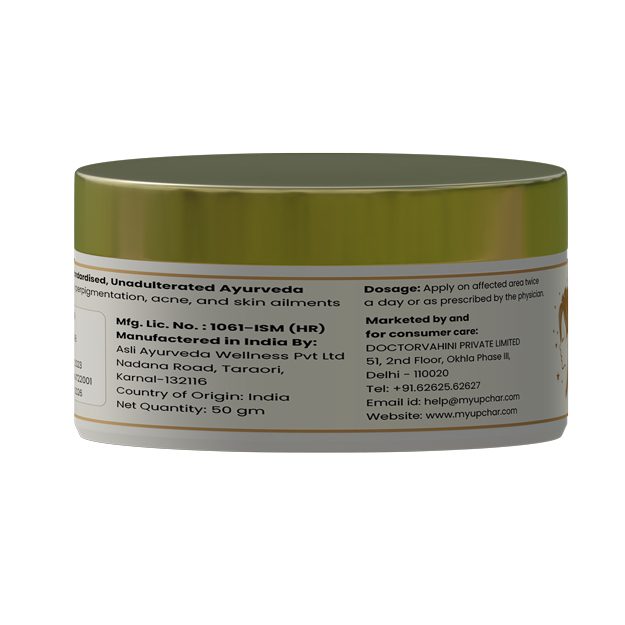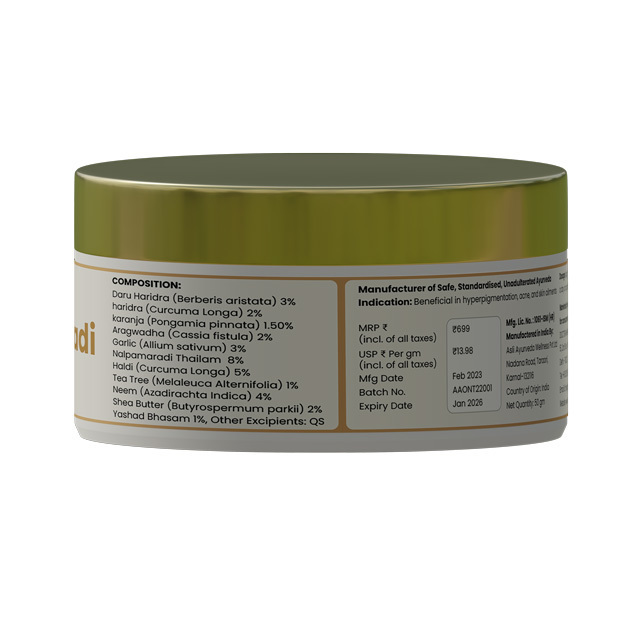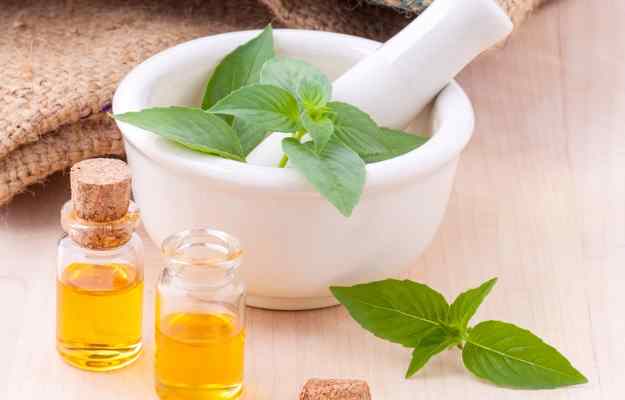Clove oil is extracted from the dry flower buds of the clove plant, Syzygium Aromaticum. This plant is mainly found in Indonesia, India, Pakistan, Sri Lanka, and Eastern Africa.
Clove plant is evergreen, and it grows approximately twenty-six to thirty-nine feet tall. The leaves are square in shape and are a colorful shade of pink grow in clusters. The flowers are harvested when they are less than an inch in size and bright red in colour. They are then dried in the sun until a dark brown colour with a rigid texture is achieved.
Three types of oil are obtained from the clove plant. Bud oil comes from the flower buds, leaf oil from the leaves and stem oil from the twigs.
Clove is one of the oldest spices and the oil they produce is used as a natural treatment for a variety of ailments. The colour of the clove oil ranges from pale yellow to golden brown. It is readily available at local stores it can be easily found in the medicine cabinets of people who prefer a natural approach to treating their everyday problems. It has significant medicinal properties and is typically used for pain relief. It has a spicy aroma, like that of cloves. Hence, clove oil is commonly used as a fragrance and flavouring agent in various recipes.
Some basic facts about cloves and clove oil:
- Scientific Name of clove: Eugenia caryophyllata L.
- Family: Myrtaceae
- Common name: Laung ka tel in Hindi
- Sanskrit Name: लवङ्ग-तैल, LavaGga-talia
- Origin: Clove oil is a native of Indonesia and the Malacca Islands.
Nutrition facts of ground cloves
The nutritional value of cloves per 100 g according to the USDA Nutrient Database is as follows:
| Nutrients | Value per 100g |
| Water | 9.87 g |
| Energy | 274kcal |
| Fats | 13.00g |
| Carbohydrate | 65..53 g |
| Fibre | 33.9 g |
| Sugars | 2.38 g |
| Minerals | Value per 100 g |
| Calcium | 632mg |
| Iron | 11.83mg |
| Zinc | 2.32mg |
| Magnesium | 259 mg |
| Phosphorus | 104 mg |
| Potassium | 1020 mg |
| Sodium | 277 mg |
| Vitamins | Value per 100 g |
| Vitamin A | 8 µg |
| Vitamin B 1 | 0.158 mg |
| Vitamin B 2 | 0.220 mg |
| Vitamin B 3 | 1.560 mg |
| Vitamin C | 0.2 mg |
| Vitamin B-6 | 0.391 mg |
| Vitamin E | 8.82mg |
| Vitamin K | 141.8 µg |
| Fats/ Fatty acids | Value per 100 g |
| Saturated | 3.952 g |
| Monounsaturated | 1.393 g |
| Polyunsaturated | 3.606 g |
*According to a fact sheet published by CBI, department of foreign affairs, Garmany, 100g of cloves may contain about 14ml of volatile oils.
Clove oil health benefits
Clove oil for dental health
The most prominent and significant benefit of clove oil is dental care. Clove oil is added to several dental products like toothpaste and mouthwashes due to its considerable germicidal characteristics and the presence of a compound called eugenol. Eugenol has been known to exhibit irritant action as well as analgesic effect. It helps fend off dental discomfort, mouth ulcers, toothache, and sore or bleeding gums. The strong and potent smell of clove removes bad breath and even soothes throat pain.
Clove oil also possesses antiseptic and antimicrobial activity against oral bacteria like S. aureus, E. coli, and C. albicans. This helps keep dental caries and periodontal disease at bay. Using clove oil for dental troubles is as simple as diluting a few drops of the oil into a cup of warm water for gargling.
Clove oil for skin
Most of the commercially available skin care creams and lotions consist of harsh chemicals which may have various side effects. However, clove could be used as a natural alternative to such skin care products. Clove oil contains a compound known as eugenol which is especially known for its antibacterial properties. It is effective in the treatment for acne, reducing swelling as well as killing the infectious bacteria at the same time. It can clear cystic acne as well.
Mixing a few drops of clove oil in your daily skin cream can aid you in getting a clear and smooth looking skin. Clove oil can also prevent the early signs of ageing skin including wrinkles and sagging skin. It even helps get rid of blemishes and scars when applied directly on the skin in appropriate proportions. Also, It works as a mild chemical peel, which helps in exfoliating dead skin. As a stimulant, clove oil increases the blood flow in the skin tissue. Together, these properties can help in reviving the youthfulness of the skin.
Due to its antiseptic property and soothing effects, it is used as a massage oil and in soaps.
Clove oil as a repellent
Clove oil works as a great bug or insect repellent. In fact, It is a common constituent of many insect repellents. Conventionally, a few drops of clove oil were scattered around the room and sleeping area to keep the mosquitoes away So, you can use clove leaves or oil and save money on buying bug sprays. Cloves can even be planted around yards to decrease the number of bugs. Furthermore, clove oil-based creams can be directly applied to the body to keep insects and bugs at bay. Bug and insect repellent candles also consist of this oil.
Clove oil for hair
Applying small quantities of clove oil on the scalp helps reduce the rate of hair fall and promotes hair growth. This oil can also aid in covering the bald spots and makes your hair long and lustrous.
It boosts the blood circulation in the scalp, stopping unnecessary hair fall and consequently accelerating hair growth post one week of application. When a drop of clove oil is mixed with olive oil, it works wonders as a conditioner. It strengthens the hair straight from the roots to the tips.
Clove oil for nose and ear
Traditionally, clove oil is used for the treatment of respiratory ailments like cold, cough and sore throat. It has a cooling and anti-inflammatory action which helps clear the nasal canal and gives you relief from respiratory troubles such as, sinusitis and asthma.
Studies suggest that the antibacterial properties of clove oil are very helpful in reducing the risk of common respiratory infections. Clove oil has also been found to be an effective cure for nasty earaches and middle ear inflammatory diseases like otitis media.
According to an in vivo study, carvacrol, one of the active components of clove oil can inhibit the growth of Pneumococci and H. influenzae which are the causative agents of otitis media.
A mixture of warm clove oil and sesame oil is a good remedy for earaches as it has a numbing effect on the pain.
Clove oil for stomach
Clove oil is one of the oldest remedies for fighting indigestion and stomach related issues. clove oil also comes handy for treating hiccups and motion sickness. Traditionally, it has been used in the treatment of stomach problems such as diarrhoea, bloating, flatulence and indigestion. If a few drops of oil are rubbed on the stomach area, it can help decrease gas and eliminate the toxins from the body.
A research documents that the essential oil of clove and eugenol possess antiulcer properties and have the ability to stimulate the synthesis of mucus which is an essential gastroprotective factor.
(Read more: Stomach ulcer treatment)
Clove oil for diabetes
Diabetes tends to disturb the glucose metabolism in the body by harming the insulin-producing cells. Lack of insulin is in turn responsible for hyperglycemia (high blood glucose levels). Clove oil helps in maintaining insulin levels in the body. Studies suggest that post-meal insulin is likely to be more regular when clove oil is consumed. Eugenol is the major compound present in clove oil. In an animal-based study, eugenol has been found to reduce diabetic complications by mediating an antioxidant and anti-inflammatory function. So, clove oil may have an important place in anti-diabetes therapies.
(Read more: Diabetes treatment)
Clove oil for nausea
Clove is very effective in controlling nausea and is commonly used to diminish the effects of morning sickness and discomfort faced by pregnant women. Studies suggest that clove oil has various bioactive components which can help in improving digestion and soothing nerves. It can also reduce the feeling of dizziness, which is one of the causes of nausea.
Clove oil can also be used an inhalant to get rid of nausea.
Clove oil for infections
Clove oil is blessed with an abundance of antiseptic properties. It can be used to treat cuts, wounds, fungal infections, prickly heat, athlete’s foot, and insect or bug bites. However, the direct application of clove oil may be harmful. If the wound is fresh and sore, it is suggested to dilute the oil by adding it with proportions of almond or coconut oil. These carrier oils can help prevent your skin from burns that can be caused by the direct application of clove oil.
Clove oil for cancer
Cancer is a ghastly disease which has been affecting numerous lives all over the world. The only cure for advanced stage cancer is chemotherapy which tends to leave endless side effects in its wake. Of late, there has been a growing resistance to anticancer drugs which have led to a shift in the focus towards natural products.
Clove oil is one such natural product which is believed to have anticarcinogenic properties. Eugenol is an essential oil found in the bud and leaves of Syzygium aromaticum (L.). Studies suggest eugenol inhibits cell proliferation and is especially seen to be effective against breast cancer lines.
According to the National Cancer Institute, NIH, free radicals and oxidative stress could contribute to cancer by increasing DNA damage. Studies suggest that eugenol reacts with these reactive oxygen species (ROS) and arrests the free radical damage thus reducing the risk of cancer.
Clove oil side effects
- Clove oil, when consumed internally may lower blood glucose levels. Individuals prone to hypoglycemia (low blood sugar), should be cautious when taking clove oil. In addition, people taking medications such as metformin or insulin to regulate the blood sugar levels in the body may need to monitor their blood glucose more intently when taking clove oil.
- Clove oil may increase the risk of abnormal bleeding. People suffering from bleeding disorders such as haemophilia or people taking drugs or herbs that have blood-thinning effects should be careful when consuming clove oil. It is even suggested to avoid consuming clove oil several days before surgery or a dental procedure.
- Consumption of undiluted clove oil has been found to cause toxic effects. The side effects of such oil include nausea, sore throat, vomiting, sedation, difficulty in breathing, fluid in the lungs and seizures. Consuming unusual proportions of undiluted clove oil can also lead to blood disorders, kidney failures, and liver damages. Individuals suffering from kidney and liver disorders or people who have had seizures should not consume clove oil. These effects can be more severe in young children. Children, as well as pregnant or nurturing women, are suggested to avoid the use of clove oil.
- Although clove oil allergies are not very common, it has been reported in some people. Symptoms of clove allergy include rashes, itchiness, and shortness of breath. Allergic reaction to clove oil should be taken seriously as it is considered a medical emergency which can lead to anaphylaxis.
- Excess use of clove oil can take a toll on your skin and make it super sensitive. Undiluted clove oil, when applied directly on the skin, can result in irritation, rashes, burns or contact dermatitis. It can even damage the skin cells completely.
Takeaway
Clove oil is used widely in Chinese and Indian medicine. It has become more famous in Western medicine as well, as people tend to look for more natural ways to treat medical conditions.
Clove oil is a very potent oil and should be used with care. Like any other medicament, it is advised to seek medical consultation before using clove oil as a medication. When using the oil internally, it is important to remember that the usage should be in a limited manner. In conclusion, clove oil is strongly beneficial for health if the minimal precautions are taken.
Medicines / Products that contain Clove oil
- Cipzer Maxx Man Tila 15 ml - ₹449
- Dabur Rheumatil Oil - ₹234
- Herbal Canada Laung Oil 5ML - ₹51
- Herbal Canada Laung Oil 2ML - ₹29
- Mahaved Size Up Oil 15 ml Pack of 2 - ₹528
- Hapdco Relaxomuv Balm - ₹34
- Dabur Clove Oil - ₹45
- Dabur Rheumatil Gel - ₹95
- Agrow Himol Ayurvedic Oil 200ml Pack Of 3 - ₹378
- Iodex Balm 40gm - ₹171
- Iodex Balm 8gm - ₹41
- Dabur Red Paste - ₹142
- Cipzer Max Man Tila + Max Man Capsule - ₹1348
- Tag Tanshaar Ayurveda Artho Pain Oil 60ml - ₹150
- Cave Ayurveda J-Guard (Roll on) 50ml - ₹151
- Cave Ayurveda J-Guard (Fliptop) - ₹115
- Swadharma Hand Disinfectant 18ml - ₹120
- Gumtone Gel 50gm - ₹77
- Sewa Kruston Syrup 200ml - ₹135
- Herbal Canada Kesh Fit 60ML - ₹67
- Eternal Life Oral Heal Oil - ₹150
- Oliveglow Vigo Well Oil - ₹1349
- Dabur Lal Dant Manjan - ₹104
- Prakruti Jiyofresh Vednari Liniment - ₹170
- Mahaved Big Dick Oil - ₹688
- Dabur Stimulex Oil - ₹91
- Origine Naturespired Face Cream For Skin Nourishment 50 gm - ₹449
- Meru Bio Herb Miracle Tooth Paste 50gm - ₹280
- SK Regesic Plus Oil 60ml - ₹135
- Iodex Ointment 50gm - ₹91
- Iodex Ointment 20gm - ₹52
- Iodex Ointment 10gm - ₹26
- Dabur Red Paste Family Pack - ₹106
- Iodex Spray 30gm - ₹55
- Iodex Balm 45gm - ₹91
- Iodex Balm 16gm - ₹52
- Alsence Ortho D Oil Pack of 2 (50 ml) - ₹219
- Alsence Ortho D Oil - ₹115
- Novark Nano Instant Pain Relief Drops - ₹599
- Vaidyaratnam Recopain Balm - ₹76
- Ayursun Gajraj Oil - ₹190
- Nagarjuna Halin Capsules - ₹270
- Jiva Papaya Shampoo - ₹120
- Tiger Balm Red Ointment - ₹346
- Tiger Balm White Ointment - ₹346
- Sri Sri Tattva Nasya Nasal Inhaler - ₹42
- SK Regesic Plus Oil 75ml - ₹180
- Cureveda Sparkle Oil Pulling Sachet - ₹795
- Royal Swag Ayurvedic & Herbal Cigarette Combo Pack of Clove Flavour Smoke (15 Stick), SWOSH Lip Cream for Smokers, Brightening Dark Lips 15 gm, Nicotine & Tobacco Free Help in Quit Smoking- Set Of 2 Smoking - ₹539
- Ayursun Itis Ointment - ₹90
References
- Nilima Thosar et al. Antimicrobial efficacy of five essential oils against oral pathogens: An in vitro study . Eur J Dent. 2013 Sep; 7(Suppl 1): S71–S77. PMID: 24966732
- Gupta C et al. Comparative study of cinnamon oil and clove oil on some oral microbiota. Acta Biomed. 2011 Dec;82(3):197-9. PMID: 22783715
- L. Nuñez, M. D’ Aquino. Microbicide activity of clove essential oil (Eugenia caryophyllata) . Braz J Microbiol. 2012 Oct-Dec; 43(4): 1255–1260. PMID: 24031950
- Ibrahim IM et al. Effectiveness of topical clove oil on symptomatic treatment of chronic pruritus. J Cosmet Dermatol. 2017 Dec;16(4):508-511. PMID: 28382655
- Ané Orchard, Sandy van Vuuren. Commercial Essential Oils as Potential Antimicrobials to Treat Skin Diseases . Evid Based Complement Alternat Med. 2017; 2017: 4517971. PMID: 28546822
- Chaieb K et al. The chemical composition and biological activity of clove essential oil, Eugenia caryophyllata (Syzigium aromaticum L. Myrtaceae): a short review. Phytother Res. 2007 Jun;21(6):501-6. PMID: 17380552
- Marta Ferreira Maia, Sarah J Moore. Plant-based insect repellents: a review of their efficacy, development and testing Malar J. 2011; 10(Suppl 1): S11. PMID: 21411012
- Trongtokit Y et al. Comparative repellency of 38 essential oils against mosquito bites. Phytother Res. 2005 Apr;19(4):303-9. PMID: 16041723
- Nangle MR et al. Effects of eugenol on nerve and vascular dysfunction in streptozotocin-diabetic rats. Planta Med. 2006 May;72(6):494-500. PMID: 16773532
- Oboh G et al. Essential Oil from Clove Bud (Eugenia aromatica Kuntze) Inhibit Key Enzymes Relevant to the Management of Type-2 Diabetes and Some Pro-oxidant Induced Lipid Peroxidation in Rats Pancreas in vitro. J Oleo Sci. 2015;64(7):775-82. PMID: 25994557
- Kamilla Ács et al. Antibacterial activity evaluation of selected essential oils in liquid and vapor phase on respiratory tract pathogens . BMC Complement Altern Med. 2018; 18: 227. PMID: 30053847
- National Cancer Institute [Internet]. Bethesda (MD): U.S. Department of Health and Human Services; Antioxidants and Cancer Prevention
- Namrata Dagli, Rushabh Dagli, Rasha Said Mahmoud, Kusai Baroudi. Essential oils, their therapeutic properties, and implication in dentistry: A review . J Int Soc Prev Community Dent. 2015 Sep-Oct; 5(5): 335–340. PMID: 26539382
- G Hartnoll, D Moore, D Douek. Near fatal ingestion of oil of cloves. Arch Dis Child. 1993 Sep; 69(3): 392–393. PMID: 8215554

































